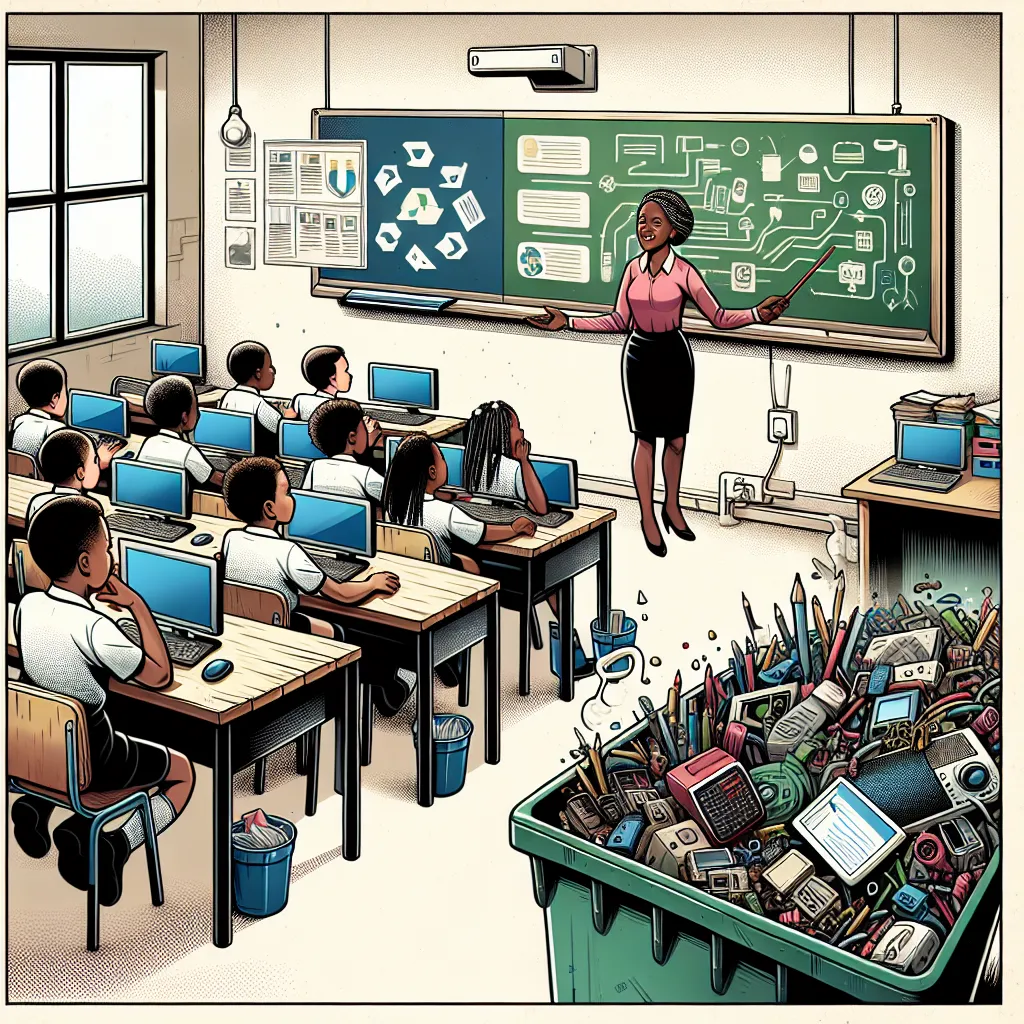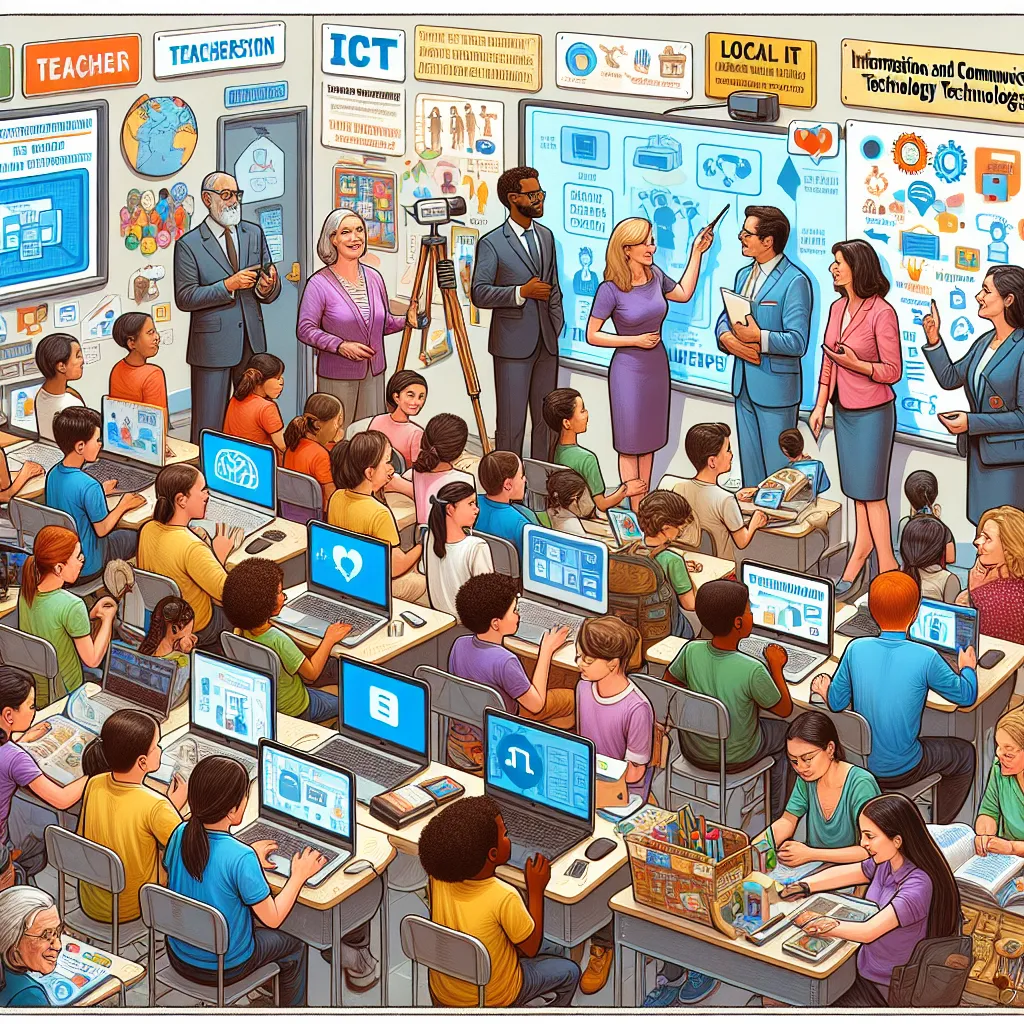Ask AI on The Internet
Question: Discuss the digital divide issue in South African schools. How does it impact students' access to ICT resources and their learning experiences? Propose possible solutions to bridge this divide
The digital divide in South African schools is a pressing issue that significantly impacts students' access to Information and Communication Technology (ICT) resources and their overall learning experiences. Several interrelated factors contribute to this digital divide, including socio-economic disparities, inadequate infrastructure, and uneven distribution of technological resources. Let's break down these issues and propose solutions to bridge the divide. ### Impact on Students' Access to ICT Resources and Learning Experiences 1. **Socio-Economic Disparities:** - **Schools in Wealthy vs. Poor Areas:** Schools in more affluent areas are often better funded and thus have better access to ICT resources such as computers, tablets, high-speed internet, and smart classrooms. Conversely, schools in poorer areas struggle with outdated equipment or a complete lack of technology. - **Home Environment:** Students from low-income families may not have access to ICT resources at home, limiting their ability to complete digital homework, conduct research, or gain digital literacy skills. 2. **Inadequate Infrastructure:** - **Electricity and Internet Access:** Many rural or underfunded schools lack reliable electricity and internet connectivity. This makes it challenging to integrate ICT into the curriculum effectively. - **Maintenance and Support:** Even when schools receive technological devices, maintaining them and providing adequate technical support can be problematic. 3. **Educational Disparities:** - **Teacher Training:** There is often a lack of adequately trained teachers who can effectively integrate ICT into teaching and learning processes. This disparity can lead to ineffective use of available technology. - **Curriculum Gaps:** The curriculum may not always be designed to integrate ICT effectively, leading to a gap in digital skills education. ### Possible Solutions to Bridge the Digital Divide 1. **Government and Policy Intervention:** - **Funding and Investments:** Increase funding for ICT initiatives in underprivileged schools to ensure equitable distribution of resources. Government subsidies or grants could help provide necessary technology and infrastructure. - **Policies for Equal Access:** Implement policies that mandate equal access to ICT for all schools and monitor compliance to ensure resources are reaching the intended beneficiaries. 2. **Infrastructure Development:** - **Improve Connectivity:** Invest in basic infrastructure like reliable electricity and internet expansions, especially in rural areas. - **Public-Private Partnerships:** Encourage collaborations between government and private sector companies to provide technological assistance and donate equipment. 3. **Education and Training:** - **Teacher Training Programs:** Develop comprehensive training programs to help teachers integrate ICT into their teaching methods effectively. This could include both initial teacher education and ongoing professional development. - **Student Training Programs:** Implement ICT literacy programs as part of the school curriculum to ensure that students acquire essential digital skills. 4. **Community Engagement:** - **Community Centers:** Establish community centers equipped with ICT resources where students can access technology outside school hours. - **Parental Involvement:** Educate parents about the importance of ICT skills and how they can support their children's learning at home. 5. **Innovative Solutions:** - **Mobile Learning:** Utilize mobile phones and affordable tablets as learning tools. E-learning platforms and educational apps can help bridge the gap, especially where conventional ICT infrastructure is lacking. - **Solar-Powered Solutions:** In areas with unreliable electricity, solar-powered computer labs can provide a sustainable solution. 6. **Monitoring and Evaluation:** - **Data-Driven Decisions:** Use data to assess which areas and schools are most in need of resources and regularly evaluate the effectiveness of interventions. - **Feedback Mechanisms:** Create channels for teachers and students to provide feedback on ICT initiatives to continuously improve and adapt strategies. By addressing the digital divide through a combination of policy intervention, infrastructure investments, education, and community efforts, it is possible to create a more equitable learning environment that provides all students with the tools they need to succeed in the digital age.
Think your answer is better than the AI's? Post it below.
Other Most Relevant Posts:
 Challenges of ICT Integration in South African Schools: Infrastructure, Training, and Resource Allocation
Challenges of ICT Integration in South African Schools: Infrastructure, Training, and Resource Allocation
 1. **ICT in South African Education**
2. **Challenges to ICT Integration**
3. **Digital Divide in Schools**
4. **SAMR Model for Educators**
5. **Innovative ICT in Classrooms**
6. **Professional D
1. **ICT in South African Education**
2. **Challenges to ICT Integration**
3. **Digital Divide in Schools**
4. **SAMR Model for Educators**
5. **Innovative ICT in Classrooms**
6. **Professional D
Question Tags
If you want your question answered by an AI, click here.





Post your own comment: